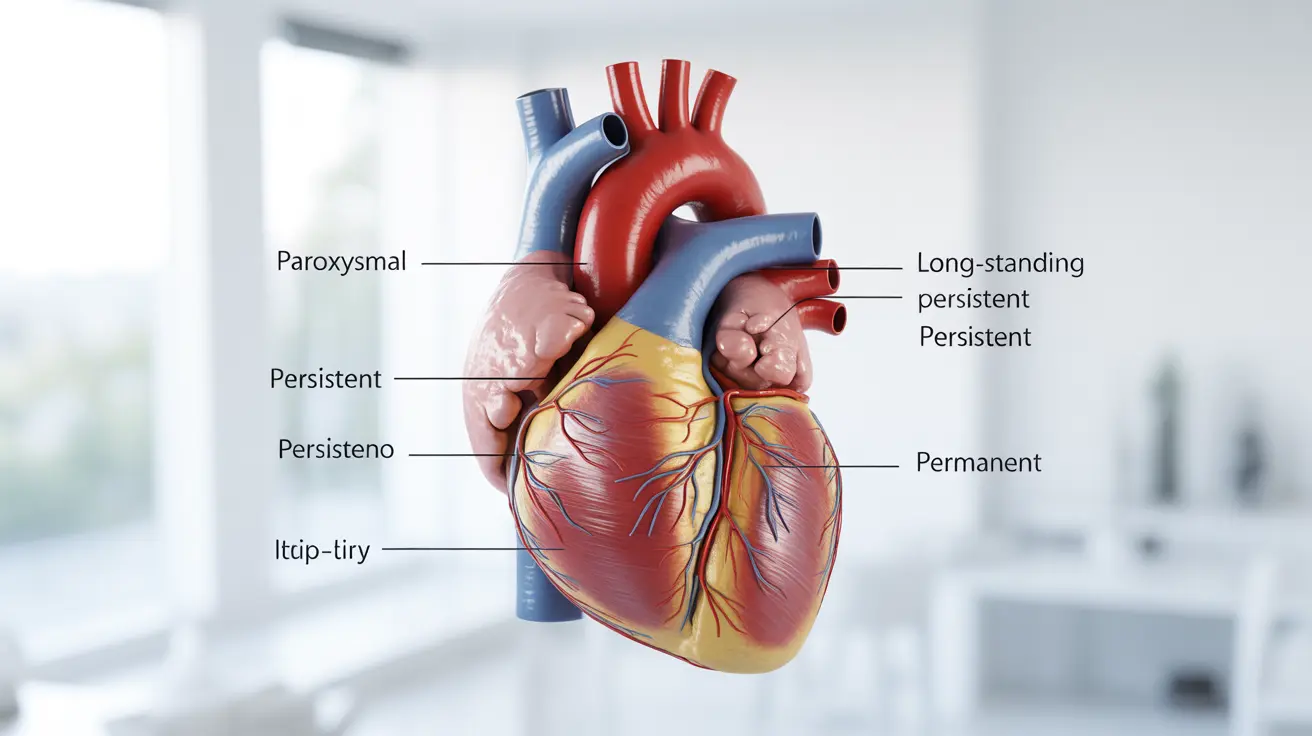Many people experience a hidden form of anxiety that flies under the radar – they appear composed, successful, and in control to the outside world, yet internally they're riddled with anxiety, worry, and self-doubt. This phenomenon, commonly referred to as high-functioning anxiety, affects millions of individuals who maintain their daily responsibilities while battling intense internal turmoil.
Unlike more visible forms of anxiety disorders, high-functioning anxiety can be particularly challenging because it often goes unrecognized by others and sometimes even by those experiencing it. Understanding this condition and learning effective management strategies can make a significant difference in overall well-being and quality of life.
Understanding High-Functioning Anxiety
High-functioning anxiety represents a complex mental health experience where individuals maintain their external performance and responsibilities while experiencing significant internal anxiety symptoms. People with this condition often excel in their careers, maintain social relationships, and appear to have their lives together, making it difficult for others to recognize their internal struggle.
This type of anxiety can be particularly exhausting because it requires constant energy to maintain the outward appearance of calm while managing intense worry, perfectionism, and fear internally. The disconnect between external success and internal distress creates a unique set of challenges that require specialized understanding and coping strategies.
Recognizing the Hidden Signs and Symptoms
The symptoms of high-functioning anxiety can be subtle and easily overlooked, both by the individual experiencing them and by those around them. Physical symptoms may include chronic fatigue, tension headaches, difficulty sleeping, or gastrointestinal issues that seem to have no clear medical cause.
Emotionally, individuals may experience persistent worry about future events, overthinking past conversations or decisions, and a constant need for reassurance from others. They might also struggle with perfectionism, setting impossibly high standards for themselves and feeling like failures when they don't meet every expectation.
Behaviorally, high-functioning anxiety often manifests as over-preparation, people-pleasing tendencies, difficulty saying no to requests, and procrastination followed by intense bursts of productivity. Many people also develop subtle avoidance behaviors, steering clear of situations that might trigger their anxiety while maintaining the appearance of being social and engaged.
The Internal Experience: When Worry Takes Over
Being riddled with anxiety while appearing calm creates a unique internal experience characterized by racing thoughts, constant mental chatter, and an exhausting need to anticipate and prepare for every possible scenario. This mental hypervigilance can be draining and make it difficult to be present in the moment.
The worry often centers around performance, relationships, and future outcomes. Individuals might replay conversations obsessively, wondering if they said something wrong, or spend hours planning for events that may never happen. This constant mental activity can interfere with concentration, decision-making, and the ability to enjoy positive experiences.
Many people describe feeling like they're wearing a mask, presenting a confident exterior while internally feeling overwhelmed, inadequate, or on the verge of being "found out" as not as capable as others believe them to be.
Practical Strategies for Managing Daily Anxiety
Developing effective coping strategies is essential for managing high-functioning anxiety on a daily basis. Mindfulness techniques, such as deep breathing exercises and brief meditation sessions, can help interrupt the cycle of anxious thoughts and bring attention back to the present moment.
Setting realistic boundaries and learning to prioritize tasks can reduce the overwhelming feeling of having too much to do. This might involve using time-blocking techniques, saying no to non-essential commitments, or delegating responsibilities when possible.
Regular physical exercise serves as a powerful tool for managing anxiety symptoms by releasing tension, improving mood through endorphin release, and providing a healthy outlet for nervous energy. Even a daily 10-minute walk can make a noticeable difference in anxiety levels.
Maintaining a consistent sleep schedule and creating a relaxing bedtime routine can significantly impact anxiety management, as poor sleep often exacerbates anxiety symptoms and makes it harder to cope with daily stressors.
Cognitive Techniques for Internal Relief
Challenging anxious thoughts through cognitive restructuring techniques can help reduce the internal burden of constant worry. This involves identifying negative thought patterns, questioning their accuracy, and developing more balanced, realistic perspectives.
Journaling can be particularly effective for externally processing internal anxiety, allowing individuals to identify triggers, track patterns, and develop insights into their anxiety responses. Writing down worries can also help contain them to specific times rather than allowing them to consume entire days.
Progressive muscle relaxation techniques can help address the physical tension that often accompanies high-functioning anxiety. By systematically tensing and relaxing different muscle groups, individuals can learn to recognize and release physical anxiety symptoms.
Building a Support System
Despite the tendency to handle everything independently, building and utilizing a support system is crucial for managing high-functioning anxiety. This might involve opening up to trusted friends or family members about internal struggles, even when everything appears fine externally.
Connecting with others who understand the experience of high-functioning anxiety can provide validation and reduce feelings of isolation. Support groups, either in-person or online, can offer valuable perspectives and coping strategies from people with similar experiences.
Professional support from a therapist or counselor can provide specialized tools and techniques for managing anxiety symptoms while maintaining daily functioning. Therapy can also help address underlying patterns and beliefs that contribute to high-functioning anxiety.
Lifestyle Modifications for Long-term Management
Making sustainable lifestyle changes can significantly impact the management of high-functioning anxiety over time. This includes establishing regular routines that provide structure and predictability, which can help reduce anxiety triggers related to uncertainty.
Nutrition plays an important role in anxiety management, as certain foods and substances can exacerbate symptoms. Limiting caffeine, alcohol, and processed foods while incorporating omega-3 fatty acids, complex carbohydrates, and magnesium-rich foods can support better anxiety management.
Creating designated worry time – setting aside 15-20 minutes daily to focus on concerns and then consciously shifting attention to other activities – can help contain anxious thoughts rather than allowing them to intrude throughout the day.
Frequently Asked Questions
What are the common signs and symptoms of high-functioning anxiety?
Common signs include persistent worry despite external success, perfectionism, over-preparation for events, difficulty relaxing, physical symptoms like headaches or sleep issues, people-pleasing behaviors, and maintaining high performance while experiencing internal distress. Many people also experience racing thoughts, overthinking, and a constant need for reassurance while appearing calm and competent to others.
How can I manage daily anxiety when I feel calm outwardly but am riddled with worry inside?
Effective daily management strategies include practicing mindfulness and deep breathing exercises, setting realistic boundaries and priorities, maintaining regular exercise and sleep routines, using journaling to process worries, and implementing cognitive restructuring techniques to challenge anxious thoughts. Creating structure through routines and designated worry time can also help contain anxiety to specific periods rather than allowing it to consume entire days.
What practical techniques or "hacks" help reduce the internal burden of high-functioning anxiety?
Practical techniques include the 4-7-8 breathing technique for immediate relief, time-blocking to manage overwhelming schedules, the "worry postponement" method where concerns are written down for later review, progressive muscle relaxation for physical tension, and grounding techniques using the 5-4-3-2-1 sensory method. Regular check-ins with yourself throughout the day and setting phone reminders for brief relaxation breaks can also provide significant relief.
How is high-functioning anxiety different from generalized anxiety disorder (GAD)?
While GAD typically involves persistent, excessive worry that significantly impairs daily functioning, high-functioning anxiety allows individuals to maintain their responsibilities and appear successful externally. People with high-functioning anxiety often excel in their careers and maintain relationships, whereas GAD usually causes more obvious functional impairment. However, both involve chronic worry and physical symptoms, and high-functioning anxiety can potentially develop into GAD if left unmanaged.
When should someone with high-functioning anxiety seek professional mental health treatment?
Professional help should be sought when anxiety begins to impact sleep quality, physical health, or relationships, even if external functioning remains intact. Other indicators include increasing reliance on unhealthy coping mechanisms, persistent physical symptoms without medical cause, feeling overwhelmed despite external success, or when self-help strategies are no longer effective. If anxiety is affecting life satisfaction or causing significant internal distress, a mental health professional can provide valuable support and specialized treatment options.




